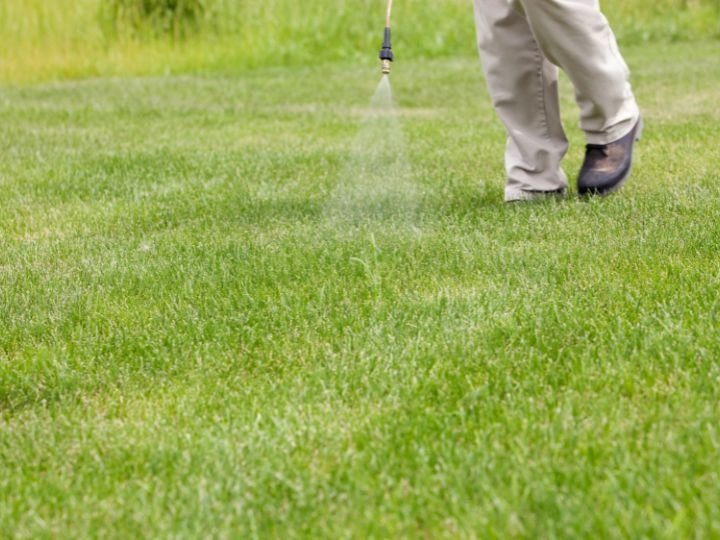Integrated Pest Management (IPM) is done throughout the year on Florida’s golf courses. The state has a temperate to subtropical/tropical climate — which is identified by abundant moisture, year-round growing conditions, and high temperatures which makes it susceptible to increased pest activity.
It is essential for golf superintendents to know what IPM is and how to implement it for every pest group (nematodes, arthropods, weeds, and diseases) to grow healthy turfgrass to achieve optimal golf course maintenance.
They must be acquainted with pest identification, understand conditions that favor pests and life cycles, and know about methods of controlling pests. IPM is a method of integrating correct plant selection, right cultural practices, the monitoring of environmental conditions and pests, the careful use of pesticides to handle pest issues, and the use of biological controls.
The goals of Integrated Pest Management include conserving energy, reducing pest management expenses, and reducing the risk of exposure to animals, people, and the environment. However, its main objective is to decrease pesticide use by using a combination of strategies to control pests, including biological, cultural, chemical, and genetic controls.

Cultural Controls
Cultural controls consist of the appropriate establishment, selection, and maintenance of the landscape. If your turfgrass is healthy, it decreases its susceptibility to nematodes, weeds, diseases, and insects, thus decreasing the need for chemical treatment.
Cultural Control Best Management Practices:
- Prevent bringing in pests by using certified plant material, eliminate infected/infested plants (sanitize), and exclude pests.
- Increase mowing height if possible to decrease plant stress linked with nematodes, disease outbreaks, root-feeding insects, or peak weed seed germination.
- Increase or stimulate root growth if you notice root-feeding pests (e.g., through fertilization, or aeration).
- Set a timer for irrigation to prevent drought stress or excess moisture and keep the duration of leaf wetness minimum.
- Get rid of dew during disease-prone periods.
- Wash mowers to prevent the spreading of weeds and pathogens.
- Let the turf dry before mowing.
- Handle thatch by balancing fertility levels, topdressing, mechanical removal, or other means.
- Divert traffic away from areas that are stressed by nematodes, insects, diseases, or weeds.
- Use sodium-vapor light bulbs or avoid outdoor lighting during peak mole cricket flight periods, from dusk to two hours after dusk. If inevitable, expect mole cricket pressure on turf under lights.
Biological Control
Biological control involves the release and conservation of natural pests (like predators, parasites, and pathogens) and other beneficial organisms (like pollinators). Natural enemies (including green lacewings, ladybird beetles, and insect-parasitic nematodes) may be bought and released close to pest infestations.
Nonetheless, the golf course landscape can also be altered to attract pests, protect them from pesticide applications, and provide a habitat for them. In out-of-play areas, for instance, flowering plants provide food resources and habitat, which then feed for turfgrass insect pests on adjacent in-play turf areas.
Genetic Controls
Genetic controls depend on the genetic engineering or breeding of turfgrasses and landscape plants that are resistant to important pests. Such resistance may raise a plant’s damage tolerance or weaken the pests. Pests may also grow more slowly on not fully resistant plants, thus raising their vulnerability to “softer” pesticides or natural enemies.
Choosing plant species or resistant cultivars when building a golf course is a very essential part of IPM. Even though superintendents usually work with established plant material, they can still suggest modifications. Every chance should be taken to educate developers, builders, plant producers, landscape architects, and others on which plants are most suitable for golf courses.
Chemical Controls
Chemical controls include a wide mixture of broad-spectrum, conventional pesticides and more judicious, newer chemicals, like insect growth regulators and microbial insecticides. IPM does not rule out the use of pesticides, however, it does encourage the use of the most selective and least toxic alternatives when chemicals are required.
Chemical Control Best Management Practices:
- Incorporate pesticide use into a pest management plan that follows a correct diagnosis and identification of pest issues, records pest abundance, ensures that the pest is in a vulnerable life stage, and considers attainable cultural management alternatives first.
- Irrigate turfgrass before and after an application according to the label, especially for insecticides designed for soil insects.
- Refrain from broad-spectrum pesticides when possible to conserve helpful insects.
- Test new pesticides on a little area on the golf course before using them widely.
- Rotate pesticides with different modes of action to manage pesticide resistance as possible.
- Preventively apply proper fungicides where diseases are prone to happen and when conditions indicate disease outbreaks.
- Precautionarily apply pesticides only in areas where serious damage previously happened, was reported, and can be possibly expected again.
- Refrain from applying herbicides when they could contribute to plant stress and result in higher damage from a secondary pest problem.
Basic steps of the IPM Program
The following are the basic steps of an IPM program:
- Identify key plants and key pests. Know which pests are linked with the turf cultivars and species being managed.
- Understand the pest’s life cycle and which life stage to aim at.
- Use mechanical, cultural, or physical methods to prevent issues from occurring, decrease pest habitat, or encourage biological control.
- Determine which pest management practice is proper and perform corrective actions. Direct control where the pest feeds or lives.
- Decide if the “corrective actions” decreased or prevented pest populations, minimized risks, and were economical. Document and utilize this information when making alike decisions in the future.
At DTE Golf, we offer premium golf maintenance services to provide our partners with healthy golf courses. Contact us today to learn more about the results that lead to increase rounds played, and increase revenue for golf courses.
